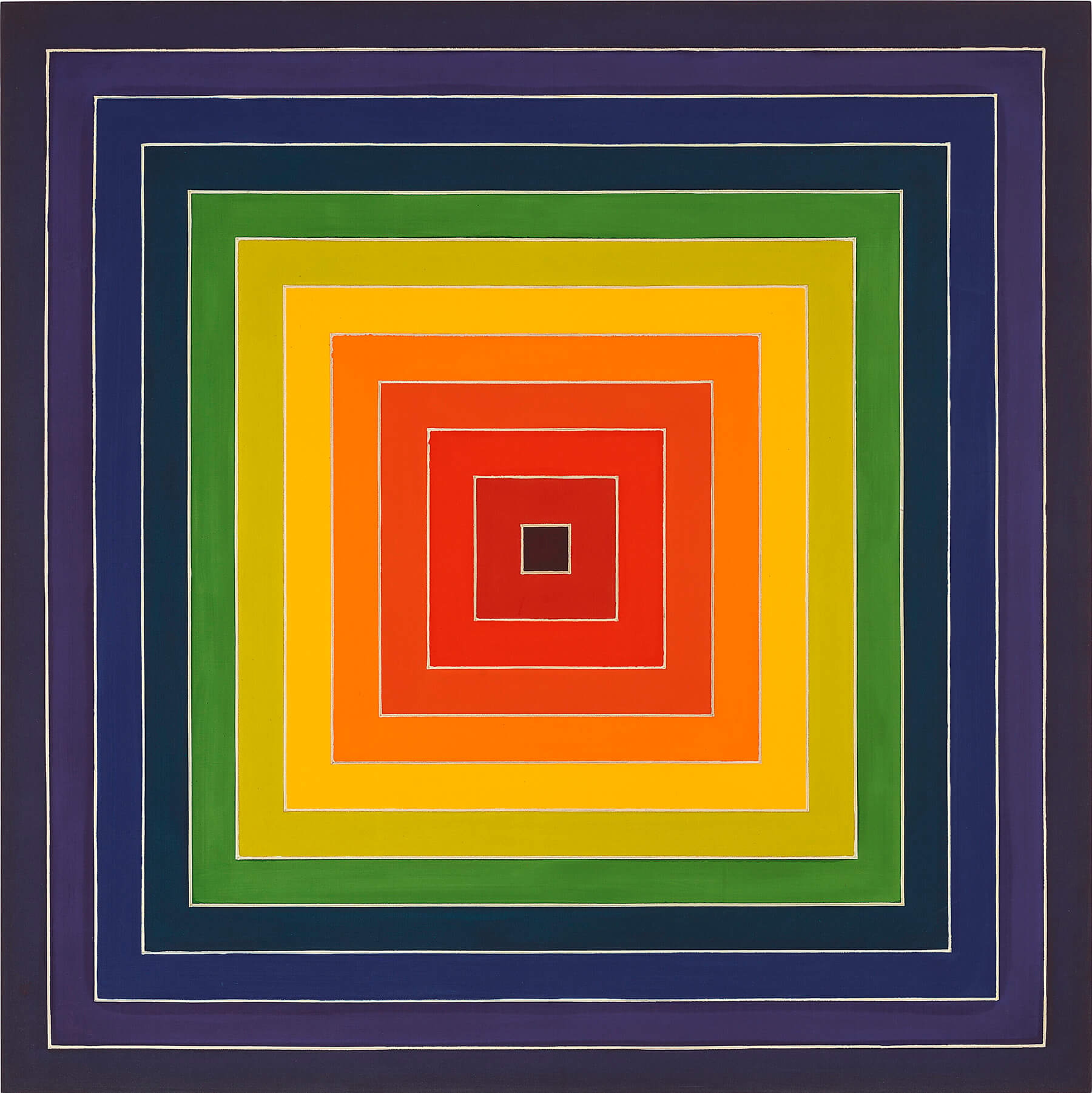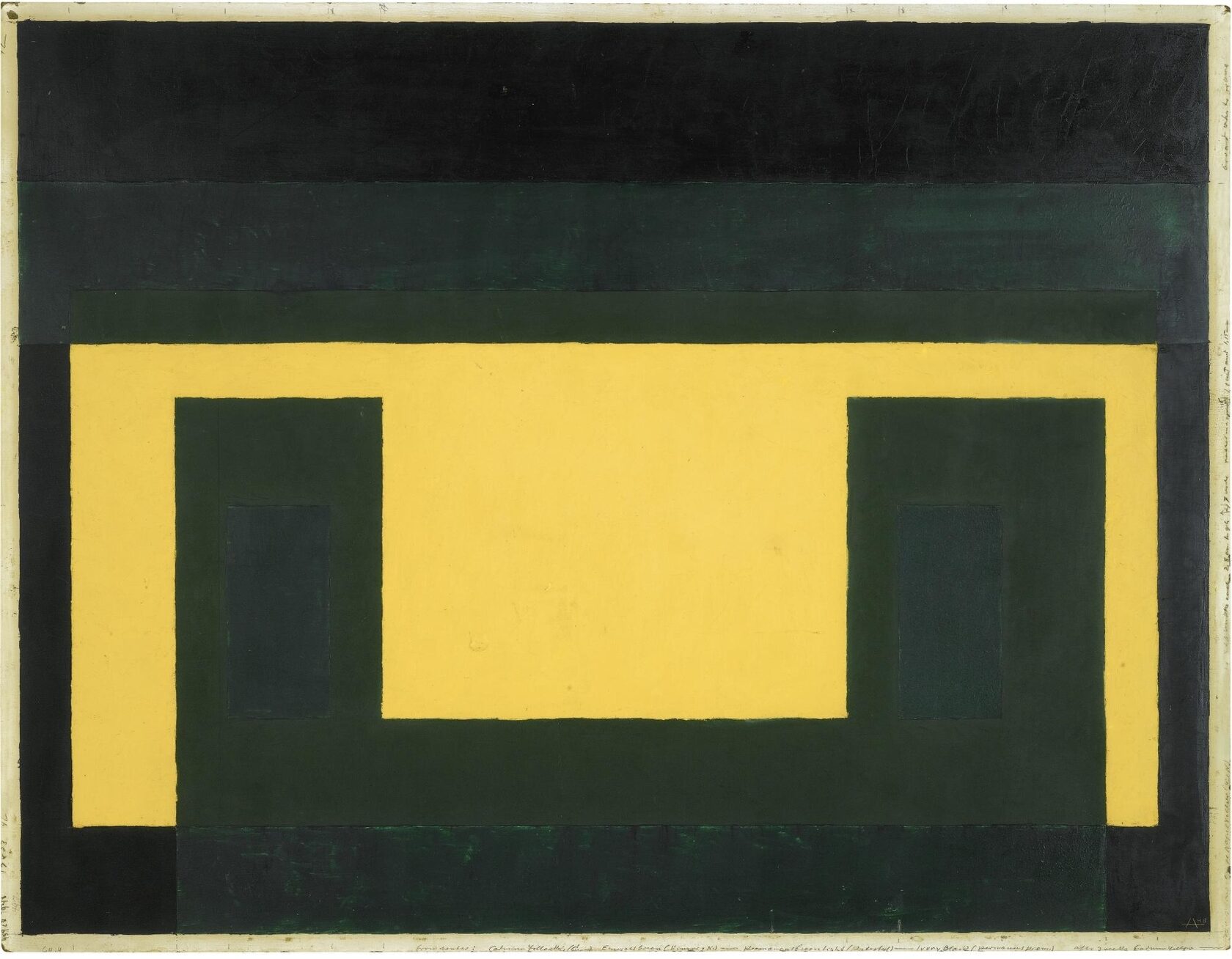Peter Halley
Two Cells with Circulating Conduit, 1986
Two Cells with Circulating Conduit, 1986
14.07.2024
23.05
Collection Highlights
Inquire
Acrylic, fluorescent acrylic, Flashe, and Roll-a-Tex on two adjoined canvases
162,6 x 264,2 cm / 64 x 104 in.
162,6 x 264,2 cm / 64 x 104 in.
'Two Cells With Circulating Conduit' marks a significant milestone within a series created between 1985–87. In 1980, Halley began to depict brick walls evocative of the constrained vista observed from his childhood residence window in New York City. Halley sought a radical means of producing these new images: "I was interested in an act of making, rather than painting. I began to think about taking that object and putting a space around it, as Jasper Johns had some with his flag paintings. The cell went from being a painting to being an object in the painting."
"The transition to 'Two Cells with Circulating Conduit' was crucial for me. Psychologically, it was about a sense of movement. Even though it was still confining, it was more optimistic. It also allowed me to represent pictorially the sense of closure and self-referentiality that I was ascribing to late twentieth century culture in general."
– Peter Halley
– Peter Halley

Jasper Johns. Flag on Orange, 1998 (detail) © Tampa Museum of Art

Peter Halley. Two Cells with Circulating Conduit, 1986 (detail) © Gary Tatintsian Gallery and the artist
"Keep in mind that I don't really see my paintings as abstract. To me, they are diagrammatic representations of the spaces we live in, isolated cellular structures connected by technologically determined pathways."
– Peter Halley
– Peter Halley
The division of work into two discrete segments evokes an architectural cross-section; the squares symbolise prototypical urban dwellings while the lines indicates the hidden, technological underworld of pipes and cables connecting them. Initiated in 1981, the cell-and-conduit paintings showcase what Halley has described as the "seductive" geometry of 1980s society. The vibrant Day-Glo colors and textured Roll-a-Tex ersatz stucco paint transform these canvases into symbols of a social landscape where artifice replaces empirical experience.

Installation shots from 'Conduits: Paintings from the 1980s' exhibition at Mudam Luxembourg, 31 Mar–15 Oct 2023. Photo by Mareike Tocha


Donald Judd. Untitled, 1996
© Donald Judd Foundation
© Donald Judd Foundation
The geometric pattern of 'Two Cells With Circulating Conduit' draws parallels with the legendary Hard-edge paintings of Donald Judd, Frank Stella, and Josef Albers. While these works are often characterized as "abstract," Peter Halley prefers the term "diagrammatic" for his exacting, minimalist compositions. He perceives his lexicon of squares, bars, and rectangles as encoded representations of the ubiquitous presence of geometry in social interactions.
Frank Stella. Concentric Squares, 1974 © Frank Stella
Josef Albers. Naples Yellow Center, 1948
© Frist Art Museum
© Frist Art Museum
In Halley's critical analysis, life within modern culture has been inscribed and circumscribed by geometric networks: envision the city grid, the office skyscraper, the high-rise residential complex, the prison facility, the parking lot. Artist's morphological explorations also focus on the traditional manner in which geometric abstraction has been interpreted. By incorporating the formal elements of Minimalist art, such as rigid color planes, singular shapes, and nonhierarchical arrangements, and mapping a narrative sensibility onto them, Halley challenges the presumed neutrality of such artistic expressions.

Peter Halley © Elise Toidé

Peter Halley. Two Cells With Circulating Conduit, 1986 © Gary Tatintsian Gallery
Peter Halley. Two Cells With Circulating Conduit, 1986
© Courtesy of the Artist and Gary Tatintsian Gallery
May 23–July 14, 2024





